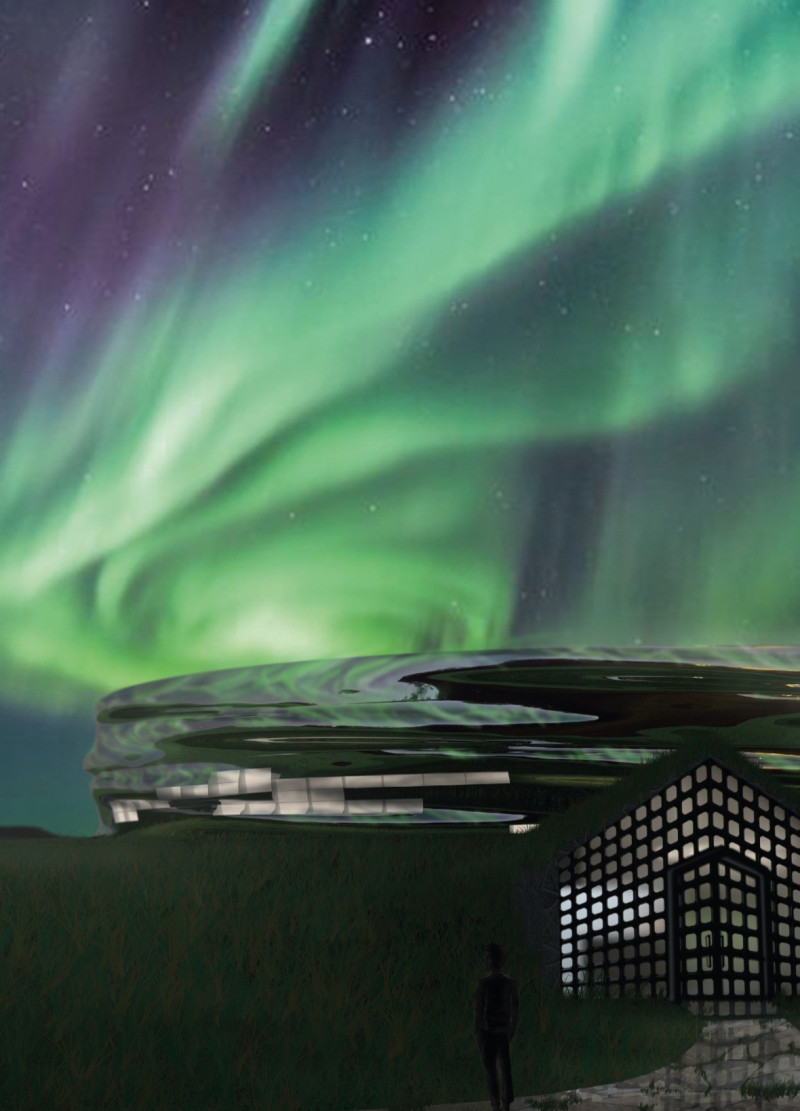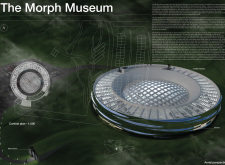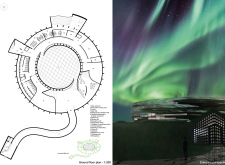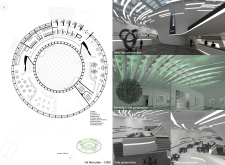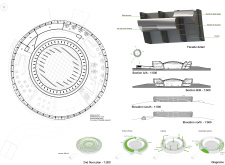5 key facts about this project
The museum's circular form promotes fluid movement throughout the interior, allowing for an intuitive visitor experience. The ground floor encompasses essential public areas, including exhibition spaces, a café, and an information center, while the upper levels house administrative offices and additional exhibition areas. This functional arrangement supports both large-scale events and intimate gatherings, making the museum adaptable to various uses.
A key characteristic of the Morph Museum is its seamless integration of large glass panels and aluminium cladding. These materials not only provide a contemporary aesthetic but also ensure durability and energy efficiency. Natural light is harnessed through skylights, enhancing the internal atmosphere while connecting visitors visually to the external environment. The use of a wooden rib structure inside adds warmth and a tactile element that contrasts with the sleek exterior, creating a balanced sensory experience.
Innovative architectural approaches define this project, setting it apart from typical museum designs. The circular layout is not merely for aesthetics; it encourages social interaction by promoting spontaneous gatherings and movement. The architectural design also considers environmental sustainability, incorporating systems for rainwater harvesting and maximizing natural ventilation.
The interior showcases flexible exhibition spaces that can adapt to diverse installations, reinforcing the museum's role as a dynamic cultural hub. This adaptability, coupled with well-planned public amenities, allows for an engaging visitor journey. The design reflects modern architectural philosophies while paying homage to Iceland's natural beauty and cultural heritage.
For a comprehensive understanding of the Morph Museum, interested readers are encouraged to explore detailed architectural plans, sections, and design concepts. These resources provide a deeper insight into the project’s architectural ideas, contributing to a fuller appreciation of its design principles and function.


